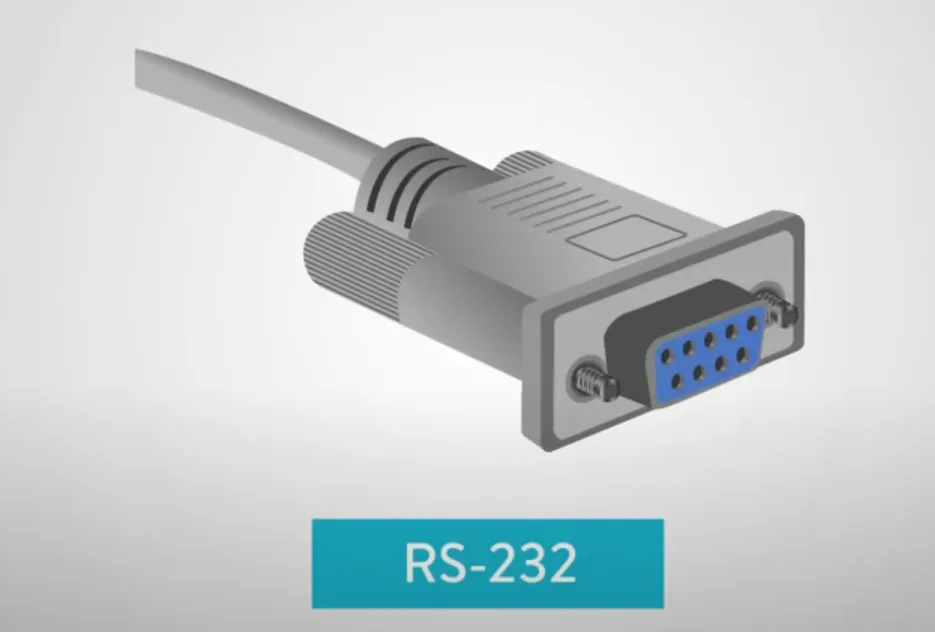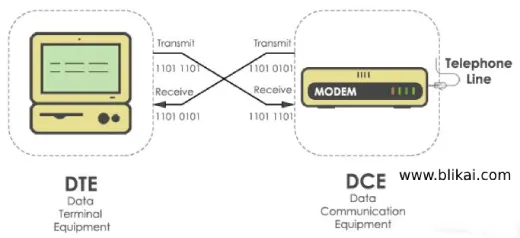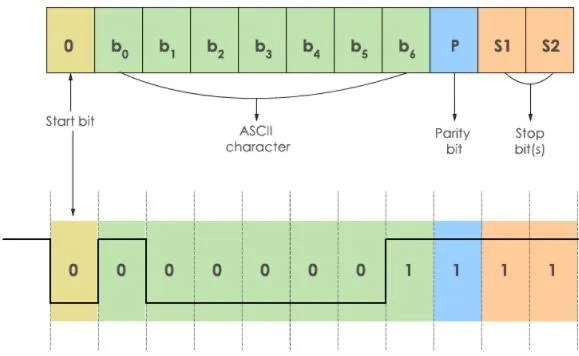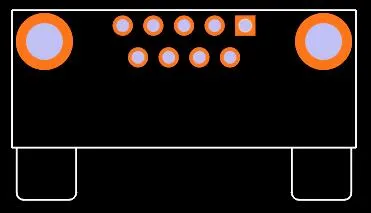RS232 vs. DB9: Advantages & Disadvantages, Differences Explained
RS232 and DB9 both serve as data connectors. This article will explore the pros and cons of RS232 and DB9, as well as delineate the disparities between RS232 and DB9.
What is the RS232 Protocol?

RS232, where 'RS' denotes Recommended Standard, establishes serial communication via DTE (Data Terminal Equipment) and DCE (Data Communication Equipment) signals. DTE, like computers, and DCE, such as modems, exemplify the respective equipment types. Formally, RS232 delineates the interface between DTE and DCE through serial binary data exchange.
The Data Terminal Equipment (DTE), represented by a computer, communicates data serially to the Data Communication Equipment (DCE), like a modem. In this scenario, DTE sends binary data "11011101" to DCE, while DCE reciprocates with binary data "11010101" to the DTE device. RS232 defines shared voltage levels, electrical standards, operational modes, and data transfer quantities from DTE to DCE. This standard facilitates information exchange over telephone lines.

How RS232 Functions?
Understanding the operation of RS-232 can be grasped through its protocol structure. RS-232 operates as a point-to-point asynchronous communication protocol, transmitting data in a unidirectional manner. Synchronization between the transmitter and receiver does not necessitate a clock. The data format commences with a start bit, succeeded by 7-bit binary data, parity bit, and stop bit, transmitted sequentially.
The transmission initiates with a Start bit '0', followed by 7 bits of ASCII data. A parity bit is added to validate the data received by the receiver, ensuring consistency between transmitter and receiver. The transmission concludes with a stop bit, denoted by binary '1'. Typically, 1 or 2 stop bits are transmitted. In the provided illustration, the ASCII character 'A' is conveyed through a serial binary stream of '1's and '0's. A specific delay between each bit, termed as inactive time, is essential during data transmission. During this interval, the RS232 line maintains a negative logic state (-12V).

What is a DB9 Connector?
The designation "DB9" pertains to a prevalent connector category, belonging to the D-Subminiature or D-Sub group. DB9 boasts the most compact "footprint" among D-Subminiature connectors, accommodating either 9 pins (in the male connector) or 9 sockets (in the female connector).

Where are DB9 Connectors Utilized?
DB9 connectors were previously prevalent on PCs and servers. They are engineered to interface with the EIA/TIA 232 serial interface standard, wherein all nine pins are standardized to facilitate incorporation into various products by multiple companies. DB9 connectors were frequently employed for serial peripheral devices such as keyboards, mice, joysticks, and are also utilized in DB9 cable assemblies for data connectivity.
Presently, the DB9 interface has largely been supplanted by contemporary interfaces like USB, PS/2, Firewire, among others. Nonetheless, numerous legacy devices continue to rely on the DB9 interface for serial communication.
RS232 VS DB9 3D Model
RS232 3D Model

DB9 3D Model


RS232 VS DB9 Characteristics
RS232 Characteristics
Characteristics include molded hoods and thumbscrews for secure connections.
Straight-through wiring is implemented across all nine pins.
DB9 Attributes
DB9 safeguards 9-pin serial connections, providing surge suppression for data terminals, data communication equipment, PCs, printers, modems, and similar devices.
Reversible design suitable for use with male or female captive DB9 ports.
Comprehensive protection on all 9 data lines, including D shell chassis.
Utilizes surge suppression with high-speed avalanche diodes to redirect excess energies on the network to the ground.
Pros and Cons of RS232
Advantages of RS232:
- RS232 interface enjoys widespread support in many compatible legacy devices owing to its simplicity. It is commonly utilized for point-to-point connections between Data Terminal Equipment (DTE) and Data Communication Equipment (DCE) devices.
- It facilitates long-distance communication, reaching approximately 50 feet for low baud rates, and incorporates error correction capabilities.
- RS232 demonstrates immunity to noise, attributed to the utilization of +/-5 Volts or higher for binary logic 0 and logic 1.
- It represents a cost-effective interface solution.
- Converters or adapters for RS232 to RS485/USB/Ethernet conversion are readily available at affordable prices.
Drawbacks of RS232
- RS232 is apt for system-to-system communications but unsuitable for chip-to-chip or chip-to-sensor device communications.
- It supports lower speeds for longer distances; higher speeds, like 115200 baud, are attainable only for short distances.
- Implementing RS232 interface necessitates additional transceiver chips, thereby increasing system costs.
- It's designed for single master and single slave configurations, not single master-multiple slaves setups.
- RS232 entails unbalanced transmission.
Advantages and Disadvantages of DB9
DB9 Advantages:
DB9 connectors offer various benefits. They allow easy customization with 9 individual pins for transmitting serial data. While their speed may be lower compared to standards like USB, they provide considerable cable length. For instance, USB has a five-meter length restriction, whereas RS-232, the prevalent standard for serial data, lacks a defined length limit. RS-422, which can span hundreds of meters with specialized equipment, has been extensively utilized.
If you possess an older device equipped with DB9 connectors, numerous conversion options are available. Converters from alternative standards such as USB, Ethernet, etc., enable seamless integration of your device with any computer.
Drawbacks of DB9
Due to their size, DB9 connectors pose challenges when connecting and disconnecting in confined spaces. The exposed pins increase the risk of damage or breakage. While mating the connector without thumbscrew hardware is feasible, it's less secure. Conversely, using thumbscrews prolongs the connection process.
Moreover, serial communication, being a slow and antiquated method of data exchange, results in sluggish speeds over lengthy cables. This often leads to communication interruptions and software freezes on PCs. Consequently, alternative standards have garnered more popularity over DB9 cables.
However, this doesn't imply that DB9 connectors are obsolete. Utilizing right-angle adapters can resolve space constraints without risking connector damage. Additionally, D-Subminiature plug and jack covers can safeguard pins from harm during periods of non-use.
Before purchasing DB9 connectors, ensure a clear understanding of your requirements. If there's a smarter alternative available for DB9 cables, consider exploring that option too!
What sets DB9 apart from RS232?
RS232 defines the serial interface, encompassing parameters like signal voltage and duration. Meanwhile, DB9 refers to the 9-pin connector often utilized for RS232 connections, alongside a 25-pin alternative. Although RS232 connections commonly employ DB9 connectors, direct soldering of cables to devices is also possible, bypassing the need for DB9 or DB25 connectors.
DB9 Manufacturer
Tripp Lite has built a reputation for unparalleled product reliability and top-tier service over its 95-year history. With a portfolio spanning over 4,000 products, Tripp Lite specializes in powering and connecting computers, networking equipment, and electronic devices that underpin our interconnected world. Whether on the desktop or in the data center, Tripp Lite offers solutions that address customers' needs and exceed their expectations. Based in Chicago, Illinois, Tripp Lite has a strong global presence with offices and partners across the globe.
Digital Comparator and Magnitude Comparator Guide
Automotive Relays: Types, Advantages & Applications
What is Flash Memory? [Comprehensive Guide]
IRF540N MOSFET :Principle and Pinout
Exploring Electronic Components: Innovations and Applications
DC Transmission: Types, Applications & Advantages
What TLV3201AQDCKRQ1 Voltage Comparator is and How It works
Top 10 Common Electronic Components Guide
Flexible Alternating Current Transmission System:Working and Types
Why Do Capacitors Explode?










